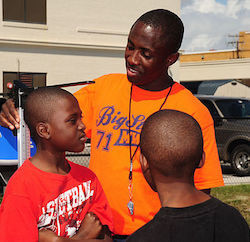Logic Puzzles - Basic
A detective uses his magnifying glass to hunt for clues, and follows those leads to determine who did it. In a similar manner, logic problems test your deductive reasoning ability. You are challenged to use the given information, make logical inferences, and reach a conclusion. As you think through the implications, remember to keep your cool and figure out the next step. Most importantly, have fun and enjoy the hunt!
Here are some tips for you to get started:
- Write down all of the information that you know.
- As you use up a piece of information, make a note. Typically a problem will require you to use most/all of the information given.
- Don’t be afraid to try different things and test some cases.
- Practice, practice, practice!
- Read the solution if you get stumped.

The school nurse is recording the heights of students in a class. When comparing their heights, the students find that:
- Alex is taller than Brian but shorter than Charlie.
- Daniel is taller than Edward but shorter than Alex.
Who is the tallest?
Let's shorten the names to their initial letters. We will say that X > Y if person X is taller than person Y.
First, let's write down what we know:
The first statement tells us that C > A > B.
The second statement tells us that A > D > E.Second, let's use the information that we have:
From the first statement, A and B are not the tallest.
From the second statement, D and E are not the tallest.Hence, we can conclude that C i.e. Charlie, who is the only person left, is the tallest.
Back to Quiz: Logic Puzzles - Basic
Logic puzzles can be classified as
- Logic Word Problems: Working from the given statements, we have to determine if the conclusion is true or false. It can be helpful to rephrase the problem so that it is familiar to you.
- Truth-tellers and Liars: Based on what people said, we have to figure out who told the truth and who lied, in order to determine what happened. Remember: Liars never say “I am a liar!”
- Order Theory: Given how certain terms compare to each other, we have to find the largest or smallest term. Drawing a flowchart can be helpful, as it offers a visual way for us to get organized.
- Elimination grids: Given a huge list of information, we set up a grid which offers an easy way of displaying and interacting with the information. Once we have crossed out untrue scenarios, "whatever remains, however improbable, must be the truth."